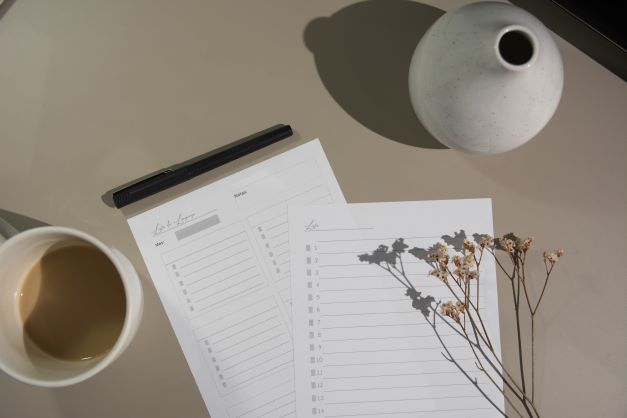9-point Spring Lawn Care Checklist
It might seem like an odd time for me to be thinking about a spring lawn care checklist. As I write this, I’m on the third floor of a hotel in Appleton, Wisconsin. I’m looking out the window at a bright sunlit morning. It’s 2 degrees with a wind chill of 7 below. Driving to the seminar yesterday, we hit a whiteout, and it was snowing heavily and blowing straight at us. My point is it’s not very spring-like right now. However, it’s mid-February, and spring is only six weeks away. It’s time to start thinking about your spring land care plan.
Spring Lawn Care Checklist
1. Clean it up
The first step in this spring lawn care checklist is to clean up your lawn and beds. Pick up twigs, branches, leaves, and leavings. I usually walk the yard with a trash bag, pick up debris, and then rake the yard. My backyard sits at the bottom of a wooded hill, so I have plenty of leaves that I rake to a pile in the woods and use as compost.
“Leaves also make great composting ingredients, especially when mixed with green trimmings and grass clippings. Again, the smaller the pieces, the faster they’ll break down, so shred or chop dry leaves before adding them to the compost pile.” — Purdue University — Much ado about leaves.
2. Aerate Your Lawn
If you’re unfamiliar with aeration, it’s simple. A machine extracts small plugs from your lawn. This allows moisture, nutrients, and oxygen to feed the roots of your grass. Here are a few of the benefits of aerating your lawn from North Dakota State University Ag
“Aeration will:
- Invigorate roots and stimulate new growth.
- Reduce soil compaction.
- Reduce thatch accumulation.
- Enhance the movement of water and nutrients into the soil.
- Smooth out bumpy lawns.”
3. It’s Time to Fertilize
The best time to fertilize your lawn in the spring is after aeration. Temperate zones and types of grass require different fertilizers, be sure to use what’s best for your yard. So, when should you fertilize your lawn?
“Apply early spring lawn fertilizer once between February and April, when your grass is starting to green up and begin to actively grow (around the time your lawn first needs to be mowed).” — Scotts — When to Fertilize for a Greener Lawn.
And don’t forget to fertilize flower beds, your vegetable garden, and roses.
4. Edge the Beds
This might sound a little nitpicky, but at least in my yard, my flower beds lose their edge. I have more than 40 beds, most along my privacy fence in the backyard. Every winter, the snow and ice move some of the edging, weeds spread and die across the borders, and overall, they don’t look very good. Regardless of how green my grass becomes, a sloppy edge makes it look unkempt.
5. Refresh Your Mulch
Here’s the thing. Many garden experts suggest removing and replacing your mulch. I don’t do that. I rake last year’s mulch, remove discolored, molded, and damaged bits, and then add new mulch on top, raking it in. It might be that I’m lazy, but it works for me and looks as good as new.
6. Tune it up
It’s time to clean up and tune up your tools and equipment. Mowers, edgers, and blowers should all be inspected and tested. Hand tools should be counted, cleaned, and replaced as needed. And don’t forget to stock up on gardening apparel, including gloves and hats. Also, you might want to check your supply of sunscreen. Here’s more on maintaining your mower, How to Maintain Your Residential Lawn Mower.
7. Prune Trees and Shrubs
The best time to prune most trees and shrubs is before spring growth. It can help them grow, and it’s much easier to identify dead and damaged areas before new growth hides the injury.
“In temperate regions, most plants go dormant during the winter. This is the time of year when they’ve halted active growth and have hunkered down for the cold weather. Because of this dormancy, late winter and early spring are typically the best times to make any adjustments to the shapes of many trees and shrubs.” — Almanac.com — Tips for Pruning in Winter and Early Spring.
8. Turn on Your Spigot and Hook up the Hose
I store my garden hoses in the shed during the winter, and of course, the spigots are off. Don’t wait until it’s time to water your lawn to learn the spigot doesn’t work or your hose has a four-inch tear.
9. Clean and Operate Water Features
I have two fountains, one large vase and another smaller, plus a small waterfall in one of my flower beds. Every spring, I change out the water, clean up the water features, and add nontoxic, organic mosquito repellent to the water. After refilling the basins with water, I give them a test run.
It might be a sub-zero wind chill where I am, but it doesn’t matter. It’s only six weeks until the spring equinox. So, I’m using the 9-point lawn care checklist to make my plan. I think I’ll start with…
How Can We Help You?
Berger Hargis has a company philosophy of providing personal excellence for all our services. Our growth and success have been due entirely to our commitment to honest, excellent customer service. The company has been built on the referral business we have received due to this philosophy.
If we can answer any questions, please don’t hesitate to Contact Us.
Photo by Paico Oficial on Unsplash
Go Back







